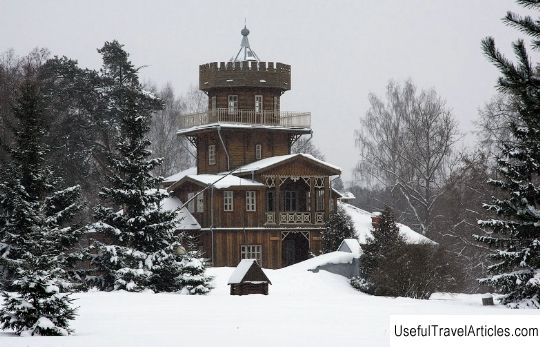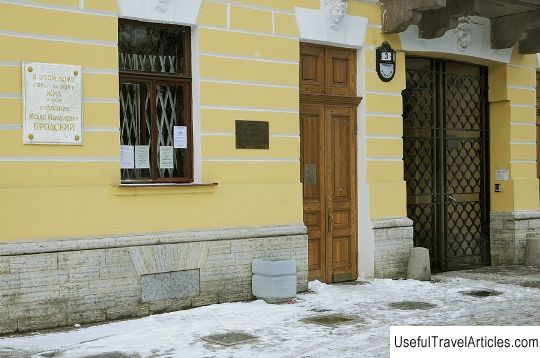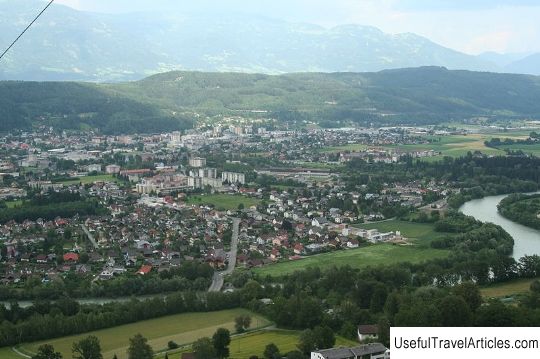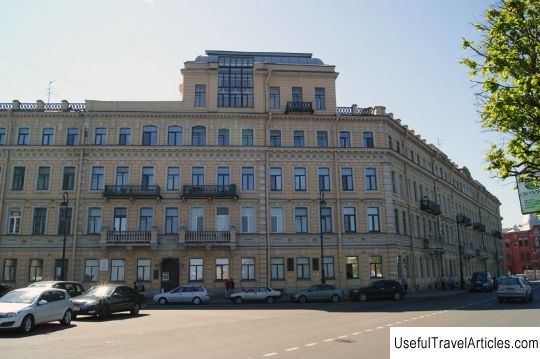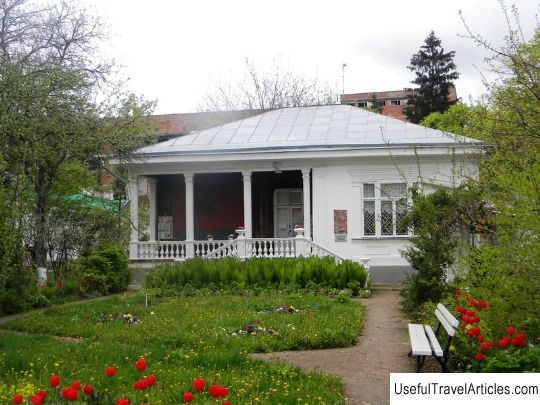I. E. Repin ”Penates” description and photo - Russia - St. Petersburg: Repino
Rating: 8,2/10 (3894 votes) 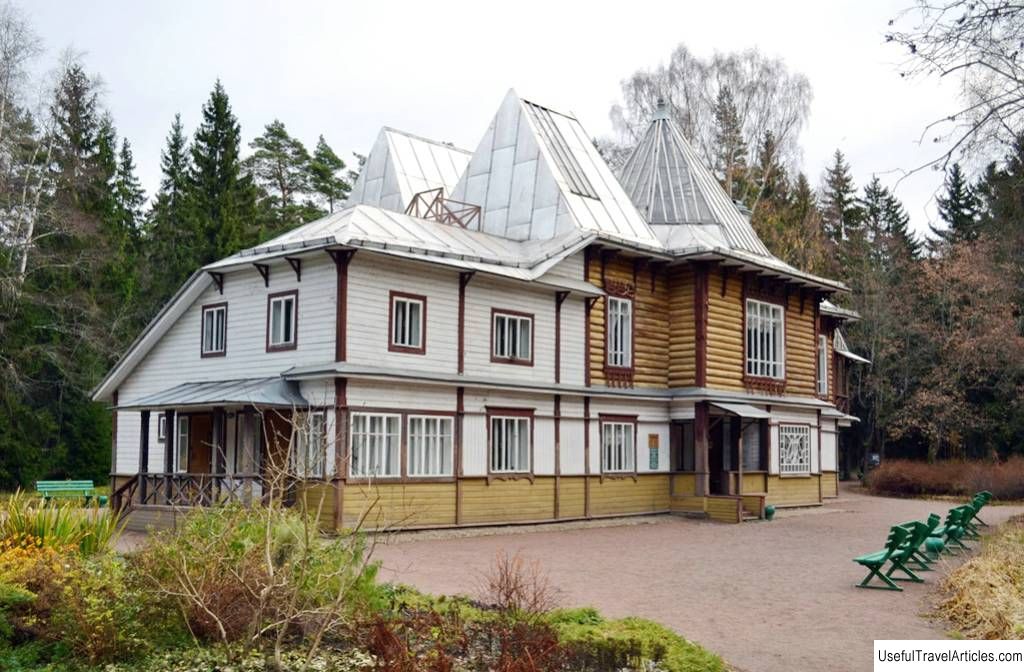
I.E. Repin "Penates" description and photo - Russia - St. Petersburg: Repino. Detailed information about the attraction. Description, photos and a map showing the nearest significant objects. Photo and descriptionThe My Penaty estate is located 45 kilometers from St. Petersburg on the shores of the Gulf of Finland. The great artist I.E.Repin spent his last years here and is buried here. The estate houses many of his works and memorial items, recreates the original setting of his workshops and living rooms. Artist Ilya RepinIlya Efimovich Repin is the most famous and most prolific artist in the genre of Russian realism. He was born in 1844 in a Kharkiv Cossack family, from childhood he loved to draw. He studied first at the school of topographers, then at the icon-painting workshop, and then he was able to enter the St. Petersburg Academy of Arts. At first, there was not enough money even for the paints and canvases necessary for examination work, but in 1871 he received a large gold medal for painting "The Resurrection of Jairus's Daughter" . And he glorified the painting "Barge Haulers on the Volga" . It was a time when society expected from artists not so much academic painting as social relevance and stories about the life of the people - and Repin perfectly fell into this stream. However, paintings on fantastic subjects were also in demand - Repin received the title of academician in 1876 for the fabulous painting "Sadko" . Repin became one of the inspirers and organizers of the Association of the Itinerants - a group of artists who painted pictures on acute social and historical themes and arranged their traveling exhibitions. Apart from I. Repin himself, there were V. Surikov, I. Shishkin, V. Vasnetsov, I. Kramskoy and many others. In the 1880s, Repin became famous. He met and became friends with the famous philanthropist P. Tretyakov , visits L. Tolstoy's Yasnaya Polyana, paints a portrait of M. Musorgsky ... For some time the artist lives in Moscow, but in 1882 he moved to St. Petersburg. Here he continues to actively participate in cultural life: for example, at first he draws closer, and then breaks with the "World of Art" A. Benois and S. Diaghilev, leads his painting workshop at the Academy of Arts. But the farther, the more he wants to focus on creativity - and since the beginning of the 20th century, he spends most of his time not in the city, but in his small estate on the shore of the Gulf of Finland ... He lives here until his death in 1930, and he is buried here. Manor "My Penates" Repin purchased the plot in 1899 . He needed a place close enough to the capital that he could always get out into the city, and at the same time secluded and picturesque enough to work. The Finnish village of Kuokkala has become such a place - now it is the village of Repino. The site is completely overgrown with forest, the new owners just slightly improved it. Ponds were dug, connecting with the Gulf of Finland, and a small forest park was laid out. The official date of birth of the "My Penaty" estate is 1903 . It is this date that is indicated on the wooden gates of the estate, which were created according to Repin's own sketch. They have a symbolic image of the Penates - Roman household gods, which in ancient Rome and in Russia in the XIX century were symbols of home and family comfort. The house was built without a definite plan, but at the same time it turned out to be an amazingly beautiful and graceful building in the Art Nouveau style . His heart was the Winter Workshop of the Artist , built according to his own drawings. The main thing for I. Repin was a sufficient amount of light, even in winter - and therefore, in addition to large windows, a unique glass ceiling is arranged in it. Now it contains the artist's original things, his paintings and sketches, and the main exhibits are a late self-portrait of 1920 and a large sketch of the "Solemn meeting of the State Council." Above the Winter Workshop, there is also a Summer "secret »Workshop . Here the artist kept unfinished works, which I did not want to show to anyone yet and worked in the summer. Now exhibitions are held here, and visitors can also see a unique small film, which consists of documentary filming about the life of I. Repin in the estate. Next to the workshops there is a small Dressing room - here they were kept costumes for sitters for historical paintings. Among the exhibits are princess Sophia's telogrey from a famous painting, a red hetman zhupan, etc. Another place where the artist could work was the semicircular Office , which was also always light. It was here that he wrote his book of memoirs. Now this is the master's desk, his library with numerous donors' autographs, a box with letters. The main exhibit of the Dining Room is a round wooden table for 20 people with a revolving center and special drawers for dirty dishes. It was made in 1909 according to a special drawing so that even a crowded dinner did not require the presence of a servant. Dinners were held according to special comic rules, for their violations were punishable by comic fines - in a word, the participants had fun as best they could. The house had two verandas - a winter and a summer one . The octagonal Winter Veranda with glass doors and a transparent roof is the lightest room in the house. Sometimes Repin wrote here, his sculptural works were kept here, some of them are still on display. Among the park buildings, the Temple of Osiris and Isis has been preserved. This is a stage gazebo built in 1906. In summer, concerts, public lectures and outdoor teas were held here. It is decorated with wooden carvings with an ancient Egyptian image of a winged sun disk. The area in front of the pavilion was called Homer's Site . The artesian well dug in 1914 to supply the estate with water, called Poseidon , was restored. The water was exceptionally clean and tasty, I. Repin drank it according to his own system and believed that this was what allowed him to keep his health. The second large gazebo - observation tower Scheherazade , an openwork two-story structure, at the top of which once stood a telescope. At the intersection of two alleys, Sosnovaya and Berezovaya, there is the artist's grave . He himself asked to be buried here, and not in the church cemetery, and not to mark his grave with a monument. The latter turned out to be impossible: at first there was a wooden cross on the grave, in Soviet times - a bust of the artist, and now it is again replaced by a cross. Outside the estate, in the parking lot, there is a sculpture depicting Repin next to the painting "The Cossacks Write a Letter to the Turkish Sultan", it appeared already in the 21st century. MuseumThe museum was opened here immediately after the annexation of this territory to Russia - in 1940 . Some of the original items were taken with them by the artist's children, who left the house of the Soviet regime and moved to Helsinki. During the Great Patriotic War, practically nothing remained of the estate - only the foundations and skeletons of the furnaces. The house had to be rebuilt from scratch using photographs and videos . The new museum was opened in 1962 . Part of the furniture that was evacuated in 1941 was returned here. Part of it was restored: for example, almost the same Becker's grand piano was found, which once stood in the living room; the photographs were used to search for the same furniture of the same firms and the same years; the dining table was restored according to the drawings, etc. In addition to the works of I. Repin, paintings and drawings of his friends and students are kept here: B. Kustodiev, I. Kulikov, F. Malyavin and many others. In total, there are more than three hundred paintings in the museum fund. The collection of memorial items continues to grow - for example, already in the 21st century, a genuine mirror of I. Repin was transferred here. Once upon a time there were numerous outbuildings in the estate: a cellar, which was connected to the home by a glass gallery, sheds, a janitor's room - they were not restored so as not to spoil the view of the estate itself. Interesting factsThe manor house houses the only sculptural work of the artist Viktor Vasnetsov - a bust of I. Repin. "My Penates" now revive the ancient fun of summer residents of the century before last - playing croquet. There are two croquet courts and croquet tournaments are held.               We also recommend reading Negros Museum description and photos - Philippines: Bacolod Topic: I. E. Repin ”Penates” description and photo - Russia - St. Petersburg: Repino. |
